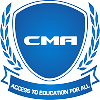Writing a research paper involves thinking out loud and reflecting on your topic. Throughout the research process, you amass data and you use logic to interpret your findings. All of these are matters that students will practice in faculty, but they also have to be guided by the instructions they get in the school to perform their research papers.
As a student, you might obtain an instruction in a special category of essay–“this is really a reading evaluation.” This means that you may need to read or carry out a reading test to meet a course requirement. You may be given guidance on what to read and how to do it. If the research paper you are working on has to perform with a particular topic from science or mathematics, your college may give you tips and suggestions for what to read and not to read while writing your research paper.
After getting your directions or having your paper reviewed by a teacher or professor, then you’re ready to begin composing. Most papers you write will be passed in on your own, but some colleges might have individual editors review the work of other students. You should always ensure you are ready to understand the directions given to you before beginning your paper. When in doubt, consult with a professor or a student leader. They can give you advice about what to write and how to arrange the paper and related materials.
In general, research papers include five sections: introduction, discussion, analysis, conclusions. The introduction is the main area of the research paper. Students should begin discussing their subject in an organized manner. This means that they need to go over what they want to accomplish with their research paper in addition to why they’re writing it and what they plan to do with it later on.
The following area of the research paper is that the discussion. This part should provide an overview of the research paper subject. Students should offer an overview of what they have learned from each chapter and include fresh or unique information that wasn’t covered in the preceding sections. Discussion questions, for example”What you have learned was important?”
The following section of this paper is the analysis. This is the area where the pupil combines previous information accumulated and produces a new point of view or conclusion about the subject. Pupils should make an effort to add as much independent advice as possible to encourage their principal argument. A comprehensive analysis requires the pupil to use more than corretor de texto online gratis one form of research and to write with an informed viewpoint. The student should check all references and also be aware of any associated assumptions before using them at the conclusion.
